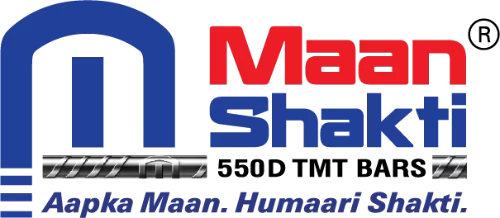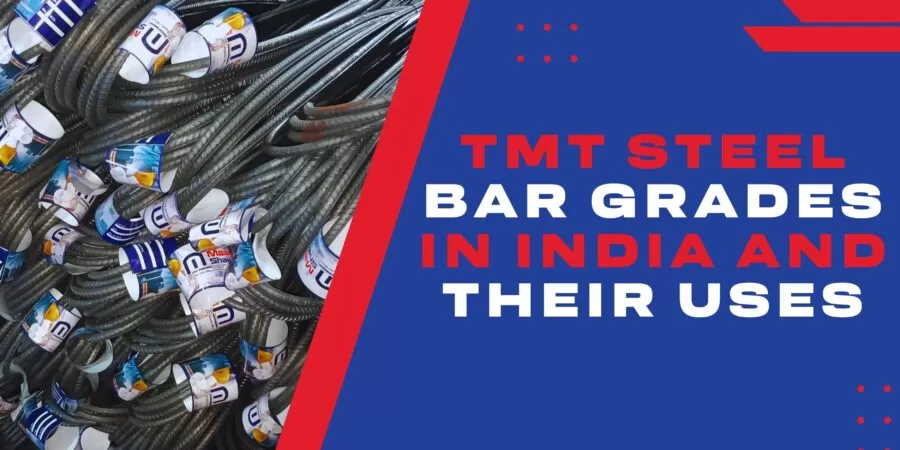TMT Steel bars have brought a drastic change in the construction industry since they were introduced in the late 90s. TMT bars come in different grades and types that are used for different RCC structures. Because of how they are built, TMT bars are soft on the inside with a tough outer layer, making them strong and resilient but flexible at the same time. These properties make them invaluable in construction.
However, all constructions are not the same, and thus, not all TMT bars are built to serve the same function. Some of the best TMT bars are used to build bridges, while some are best suited for building houses. Different grades are thus assigned to the TMT bars to distinguish between them.
As an individual looking to buy TMT bars in India, you must know what the different grades are and which one is best for what. That way, you will be able to source the right TMT bar for your construction project.
Types of TMT Steel Bars in India
India’s construction market is thriving, and the use of steel, even among smaller enterprises, has witnessed a remarkable surge. Within this dynamic market, not only the steel giants but a number of secondary steel producers have emerged to meet the growing demand.
TMT bars, a major factor in construction projects, are categorized based on their ability to endure yield stress without succumbing to damage. The choice of TMT bars for construction is based on factors such as composition, toughness, durability, and load-bearing capacity.
Diving into the Indian market, four primary grades of TMT steel bars are prevalent: Fe 415, Fe 500, Fe 550, and Fe 600, as built by the Top Rated TMT Steel Bar Manufacturers.
What Does ‘Fe’ Mean in TMT Bar Grades
In the Indian TMT bar lexicon—Fe 415, Fe 500, Fe 550, and Fe 600—the ‘Fe’ signifies the iron employed in crafting these bars. The numerical appendage after ‘Fe,’ be it 500 or 550, denotes the force or minimum yield stress required to reshape the TMT bar.
Fe 415 Grade TMT Bars
Economical and malleable, Fe 415 TMT bars find their use in small-scale civil and commercial projects. Sporting a yield strength of 415 N/sq.mm, they demand the least force for deformation, making them apt for seismic-prone regions. Resistant to rust and corrosion and with a minimum elongation of 14.5%, Fe 415 is tailor-made for earthquake-resistant residential constructions.
Fe 500 Grade TMT Bars
Used in almost every type of construction, Fe 500 TMT bars, along with variants like Fe 500D and Fe 500S, stand as one of the best TMT bars. More expensive yet 20% stronger than Fe 415, they offer cost-effectiveness by requiring lesser quantities. The critical choice for building and housing projects, including high-rises and bridges, Fe 500 excels in corrosion resistance and high-load endurance—vital for seismic zones.
Fe 550 Grade TMT Bars
Stepping into the heavyweight category, Fe 550 TMT bars boast higher tensile strength, catering to industrial projects carrying substantial loads. Crafted from a robust alloy of iron, carbon, sulfur, and phosphorous, these bars find their use in underground and bridge constructions. While pricier than Fe 500, their formidable strength justifies the investment.
Fe 600 Grade TMT Bars
Stronger than other grades, Fe 600 TMT bars are the best choice in projects demanding unparalleled load-bearing capabilities. From metro rails to marine structures, these bars, with corrosion resistance and high tensile strength, are extremely durable. Despite their cost, the overall quantity needed is minimized, making them the right choice for heavyweight ventures.
Conclusion
The difference in composition in TMT bars in India provides distinct strengths and ductility across grades. As India’s construction sector moves forward, from residential buildings to towering infrastructural marvels, TMT steel bars remain at the center—unifying strength, safety, and enduring reliability. Amid the various categories, each TMT bar grade has its distinct purpose, contributing to the various constructions happening at a rapid pace across India.


Leave a Reply